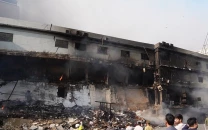Making cities livable
One city’s livability standards may or may not hold for other cities

The writer is a civil servant holding a PhD in Economic Planning from Massey University, New Zealand
It is said that home is where the heart is. The same is intrinsically true for city livability. This suggests that one city’s livability standards may or may not hold for other cities. Within the conceptual framework of the above mentioned seven sectors, every city has its own livability potential within the prevailing peculiar urban dynamics. Some researchers argue that the concept of “smart growth” can optimise the community benefits in cities, thus drastically raising their livability and eventually promoting long term economic growth. In a 2005 article in The Journal of American Planning Association, Anthony Downs argues that smart growth has a strong emotional and intellectual appeal vis-à-vis the expansionary suburban sprawl, and is therefore, an urban approach roughly opposite to sprawl.
Lahore may need to place greater focus on its areas of compact living. In line with the framework suggested by Downs, a comparative analysis of the pros and cons of smart growth and ubiquitous sprawl in Lahore can help devise a robust urban strategy for enhancing the city’s livability. The mushroom growth of housing societies in the suburban areas is mostly a result of unbridled southward sprawl. The Walled City of Lahore (WCL), on the contrary, could be treated as a case study for winnowing the impacts of smart growth in the city. The undesirable features of the city’s sprawl are characterised by unlimited southward ‘leapfrog’ expansion of low-density housing societies resulting in the transformation of Lahore’s open spaces and environmentally sensitive lands into urban uses at a massive scale. A similar trend has also been witnessed in other cities where powerful housing business mafia started grabbing people’s lands. The Islamabad Capital Territory (ICT) administration, for example, has recently extended the ban on launching housing societies for two more months to counter land grabbing in the capital. The importance of environmentally sensitive lands has also recently been highlighted in a judgment by the UK courts announcing their verdict against the government plans to build a third runway at Heathrow Airport. The suburban sprawl around Lahore may also be discouraged to reduce environmental pollution and increase the city’s livability by thematically focusing on smart growth.
The southward expansion of Lahore has indeed limited the choice among housing types and the neighbourhood configurations and surrounding urban patterns thus deteriorating the overall livability index. The trend has worsened traffic congestion and micro-pollution in the city owing mainly to excessive use of single-occupancy vehicles (SOVs) for ground travel. The 2019 World Air Quality Report also extrapolates that the particulate matter, as small in diameter as 2.5 microns or even lesser, equaling 1/30th the diameter of human hair, is the most obnoxious class of air pollution. The microscopic flecks are so small that they can enter the bloodstream through the respiratory system causing lung cancer, asthma and cardiac disorders. Another denigrating feature of sprawl around Lahore is the costly expansion of roads, water systems, sewers and other supplanting infrastructure rather than rehabilitating and improving the already in-use in the main city. The southern loop of Lahore Ring Road (LRR) is an example showing how its design and alignment were changed several times to drag it deep into the city’s convoluted southern suburban areas where the powerful elites of the country live. It is indeed a failure to redevelop older neighbourhoods in and around the main city. The deep bulging of the LRR towards the south has in fact segregated the land uses, rather than encouraging mixed land use, drastically increasing the need to travel through SOVs. These undesirable factors have played a major role in increasing micro-pollution in Lahore.
On the flip side, Lahore has a centuries-old tradition of compact community living inherently following the basic principles of smart growth. The WCL has still got a rich mohalla (neighbourhood) culture and their old traditions that can help residents thrive. And when residents thrive, communities prosper. The WCL case study may, therefore, be construed for explicating the pros and cons of smart growth in Pakistani cities. There are some basic principles for smart growth on which the WCL administration may focus on. There is a need to limit outward extension of new developments so as to make the WCL settlements more dense and compact alongside preserving open spaces. This may be done by constructing urban growth boundaries. In case of the WCL, the demolished parts of the city’s wall may be reconstructed with a view to come up with a basic urban model with limited outward extension. There is also a need to raise the residential densities in the areas adjacent to the WCL by improving mixed travel patterns with the existing neighbourhoods. That means ensuring more mixed land uses and pro-pedestrian layouts to minimise the use of SOVs for short trips. Another principle is to heavily tax the profligate consumers — rather than the public — opting for new spacious residences in the suburban areas of Lahore. Encouraging public transit will fundamentally reduce people’s over-reliance on SOVs. Last, but not the least, is revitalising older neighbourhoods through well-researched thematic urban interventions with a view to make communities thrive and prosper.
Based on the above comparative principles, assessing communities’ livability is crucial for ensuring that cities act as engines of economic growth. All megacities, such as Lahore, have unique urban strengths. Central neighbourhoods have the advantage of being close to business and job opportunities as compared with suburban areas where housing could be more affordable alongside better air quality. The same seems to hold true for Lahore. A gradual systematic transformation from the ongoing rapid sprawl to a thematic smart growth may not only drastically decrease the micro-pollution in Lahore but also make the city’s communities thrive. The bottom line is to optimally aggrandise cities’ livability before expecting them to act as engines of sustainable economic growth.















COMMENTS
Comments are moderated and generally will be posted if they are on-topic and not abusive.
For more information, please see our Comments FAQ